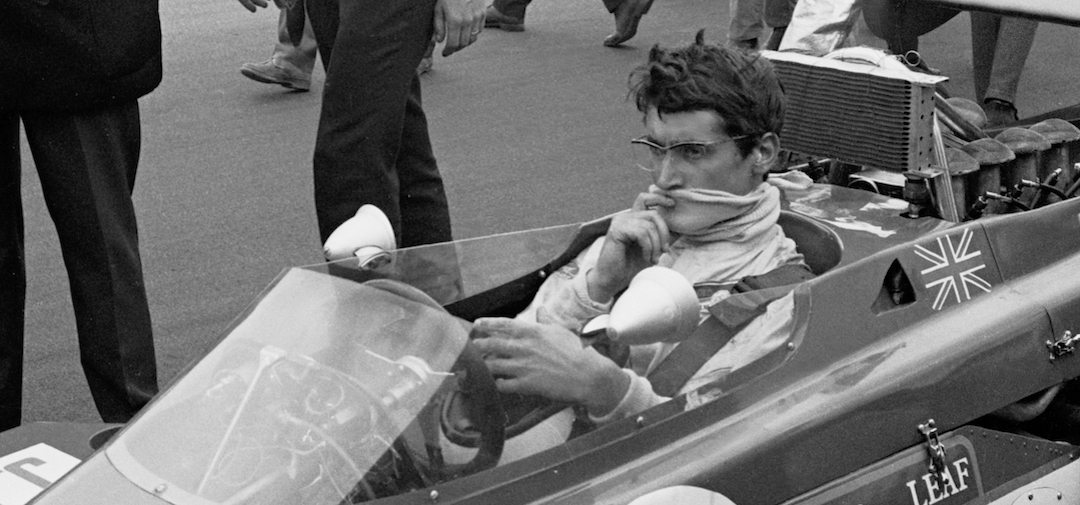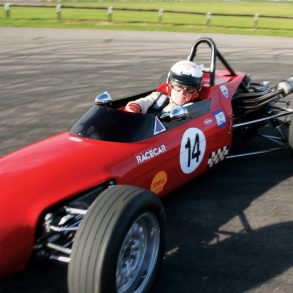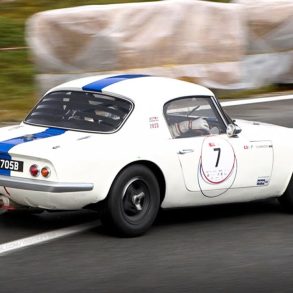
Racing driver, engineer, journalist and lifelong lover of jazz, John Miles sadly passed away last weekend. John was a quiet, but determined individual whose driving talent, according to many commentators, was greatly underestimated. Timing is such a great aspect of deciding success or failure in a driver’s career and his association and forbearance with the 4WD Lotus 63 led to many a frustrating race. Colin Chapman had asked Miles to take on testing and development duties of the car in an era where many teams including, Matra and McLaren, mistakenly thought extra driving wheels would be the holy grail, only to find it was a white elephant approach, but conventional rear-wheel drive and tire technology was still king. After a couple of outings Team Lotus regulars Jochen Rindt and Graham Hill refused to drive the car due to its lack of speed, ill handling and all round unresponsiveness. I caught up with Miles a couple of years ago at the AutosportInternational Racing Car Show, and when asked about the Lotus 63 he simply replied, “It was awful, I tested it at Snetterton, and the thing was undriveable.” Still, he persevered.
Following Graham Hill’s accident at Watkins Glen in 1969, Miles was promoted to teammate to Jochen Rindt for the 1970 Grand Prix season. After initially running in the South African GP in a heavily revised Lotus 49, Chapman’s next brainchild, the Lotus 72, became Miles’ new steed. With the dramatic and revolutionary design of the new car there were obvious gremlins. Teammate Rindt, who wasn’t the greatest of John Miles fans, seemed to keep his distance and shared little information. While Miles struggled with the 72, Rindt excelled, winning a good handful of races and dominating the World Championship. Then the tragedy of Monza struck. From that day forward, Miles’ days as a Team Lotus driver were numbered, and he was replaced by Reine Wisell. Prior to walking away from motor racing as a driver he had a couple more starts in a Grand Prix car with BRM, but the writing was on the wall and he moved on to become a motoring journalist and engineer.

Born the son of character actor Bernard Miles, later Sir Bernard and then Lord Miles, who created the Mermaid Theatre, London, and his actress mother Josephine Wilson (later Lady Miles), John Miles’ rise to motor racing’s pinnacle was not due to any parental influence. However, both his uncles on his mother’s side were keen engineers, so there was a genetic influence and he became smitten. His first motoring was at the wheel of an Austin 7, which he looked after mechanically, with special regard to the engine, especially for his first competition racing at Oulton Park, Cheshire — a good distance away from his home in St John’s Wood, London. The Austin 7 was a great vehicle to understand car control, and Miles learned a great deal from the car, lessons he’d appreciate in his later racing life.
By the early to mid-1960s Miles had teamed up with Willment with spectacular outings in the Diva-Ford, so much so his reputation earned him the title John “Diva” Miles. At that time, Miles had no ambition to drive Grand Prix cars; it was GT40s and the like that he dreamt of driving around iconic European circuits such as Spa and the daunting Nürburgring. From Diva to Lotus Elan, but staying with Willment, Miles took the 1966 AutosportGT Championship, which included nine consecutive victories in the Elan.
For 1967 Miles signed to drive in both GT and F3 categories under the banner of the newly branded Gold Leaf Team Lotus, and a busy year ensued with much experience gained over the next several season. In 1969, Miles was promoted to F2 with GLTL, and later that year made his F1 debut at the French GP in the Lotus 63.
After his F1 foray, there was one more racing accolade for John Miles, and that was in the 1972 Paul Ricard Six Hours. Teamed with Brian Muir in the Ford Capri they took an exciting victory, but motor racing no longer held the grip, charm, or indeed any future, for Miles and he withdrew. Writing road tests for Autocarand working on the technical and mechanical side of the sport as an engineer were roads that held his future, with the engineering finally taking center stage.

Detailed examination and development of active suspension systems used in F1 in the late 1980s and early ’90s found him back at Lotus, this time for Lotus Engineering. He worked again in Grand Prix racing with Johnny Herbert, Mika Hakkinen and Alex Zanardi. After an 18-year stint with them he eventually left and took employment for three years at Aston Martin, working on the Vanquish among other models. Finally he was offered a job at Canadian automotive components company Multimatic, working from their UK base in Norfolk.
As mentioned earlier, Miles loved jazz music and in 1985 set up his own recording label Miles Music. Following the death of Ayrton Senna he recorded some music inspired by the late Brazilian and in 1996 he released the CD Tamburelloby Pete King, which won the BT Jazz CD of the Year Award.
Miles loved motor racing, both driving and the technical side too, but time and circumstance were not in his favor to become the great driver he could have been. His initial success took him to the higher echelons of racing, and together with his mechanical engineering prowess ensured his election as a BRDC Member. However, he was not to be seen there on a regular basis, nor have I seen him driving at either of the Goodwood events. Personally, I believe his words from an interview some two years ago, seemed to sum up his career quite well, “I’ve moved on from motor racing, and I’ve done other things which mean more to me. Once motor racing was all I lived for, but in the end you suddenly realize there are other things in life.”
Vintage Racecar offers sincere condolences to his wife Diane, his family and many friends.










